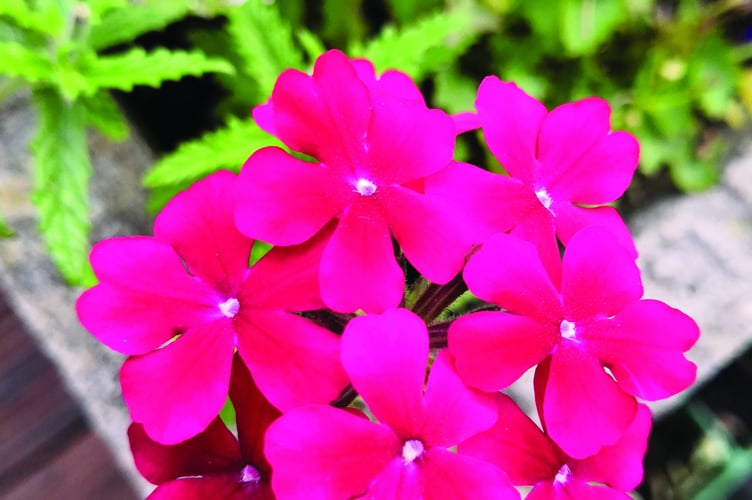IT’S not only us humans who have noticed autumn this year has been exceptionally mild, writes Royer Slater in this week’s Out and About.
Alongside unusually high temperatures across the UK, South East England experienced the wettest first week of November on record.
Bedding plants in Woking are still in bloom, thriving in the absence of the cold temperatures we expect at this time of year.
Lilies are producing more flowers and shrubs such as rhododendron and azalea are also in flower. There are reports of second flowerings for horse chestnut trees and new leaves on species such as ash.
Think about the weather from the plant’s perspective: after the dry summer, the soaking rain and mild temperatures this autumn have been similar to spring. And the hours of daylight and darkness are similar to spring, when many plants normally bloom. Plants think “it’s spring” and open flowers!
The UK’s wildlife may also be confusing the seasons. Nature’s Calendar, a citizen science project which records seasonal changes to track the effects of climate change, has had reports of spring-like behaviour from several species over the last few weeks.
Dr Kate Lewthwaite, citizen science manager for Nature’s Calendar, has had reports of active amphibians and butterflies.

She said: “We would normally expect butterflies and newts to be going into hibernation around now, so it’s really interesting to see how the weather seems to be changing these patterns and how wildlife appears to be making the most of the mild autumn weather.”
The warmer weather is good news for hedgehogs, which need to build up their fat reserves during autumn, ready for hibernation. This is particularly important for any late summer and autumn litters, as they need to be big enough to survive their first hibernation.
“Hoglets” spend three to four weeks in the nest with their mother, then around two to four weeks learning how to forage with her. Then they are out in the big wide world by themselves.
The hedgehog’s natural diet mainly consists of earthworms, ground beetles, caterpillars, earwigs and millipedes, which are more plentiful during the mild temperatures.
When it becomes colder and during dry periods, these creepy-crawlies become much scarcer in gardens, when hedgehogs will benefit from a shallow dish of water and supplementary feeding. Any meat-based wet dog or cat food, or dry cat food, is ideal as these are high in the protein they need.
You can see ideas for home-made feeding stations that prevent the food being gobbled up by cats and foxes on the Hedgehog Street website (www.hedgehogstreet.org), provided jointly by People’s Trust for Endangered Species and the British Hedgehog Preservation Society (BHPS). The site also explains many other ways you can help hedgehogs.
Although the warm and wet weather this autumn can extend the growing periods for plants and allows more foraging time for animals, which in the short term gives them a chance to recover from the summer heatwaves and drought, if this pattern of weather becomes increasingly common, disruption to natural cycles may throw species out of sync.

Butterflies, for example, rely on a period of dormancy during winter to save energy while food is scarce, and many plants require a spell of cold weather in winter to drive germination in spring.
It’s not just animals that struggle with rising autumn temperatures longer-term as trees rely on cold spells to help kill off and stall the spread of pests and diseases.
Alisha Anstee, lead policy advocate for tree health and invasive species at Woodland Trust, said: “Climate change is likely to lead to a multitude of challenges for our trees and woodlands. One area that is not exempt is the threats posed to trees by pests and diseases.
“As our climate changes over time our trees are likely to be more stressed, which means they will be more susceptible to the impacts of pests and diseases. Warmer temperatures will likely lead to more pests and diseases being able to thrive in the UK.
“These species may previously have been unable to survive in the cooler UK but an increase of up to two degrees could reverse this.”
Dr Lewthwaite, of Nature’s Calendar, added: “A changing climate means changing seasons. We already know that spring is arriving an average of 8.4 days earlier each year, but not so much is known about autumn.
“To understand the impact these rising temperatures may have on the timing of natural events, we need people to record what they are seeing in their local woods, gardens and parks on Nature’s Calendar as soon as they can.”
Anyone can take part in citizen science by recording their signs of the seasons on Nature’s Calendar at www.naturescalendar.woodlandtrust.org.uk and using the Add a Record tab.


.jpeg?width=209&height=140&crop=209:145,smart&quality=75)

